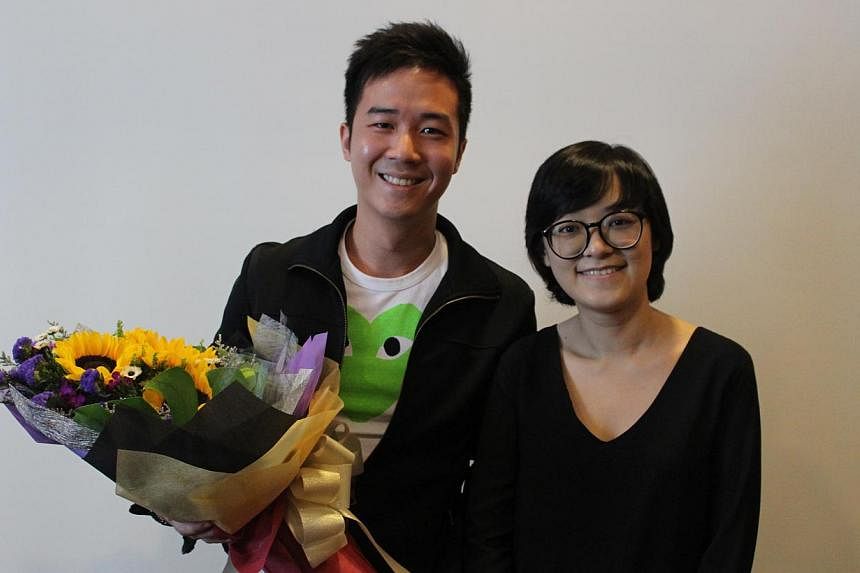SINGAPORE - Indonesian student Narita Nikitina's life was transformed after her graduation two years ago when she was diagnosed with acute myelogenous leukaemia (AML).
For the Lasalle design graduate, now 24, not just the overseas trip that she had planned with her friends was at stake, but also her survival.
After her initial treatment failed, her only chance of survival was through a bone marrow transplant, but none of her family members were suitable donors.
Luckily, she became one of the rare ones who found a match - despite the odds of this being 1 in 20,000.
"I've heard that people wait really long or even never get a transplant in time, so I was very happy," she said.
She cried when asked about how grateful she was towards her donor, Mr Jeth Ng, when she met him for the first time today.
The now 28-year-old assistant brand manager was not expecting a call from the Bone Marrow Donation Programme (BMDP) telling him that he was a match.
In fact, he missed the call and thought the email was spam, but when he eventually got another call, he agreed to go for initial tests.
He hesitated initially, especially because he thought that the only way to donate his bone marrow was a painful extraction from the base of his spine.
Bone marrow harvest is a one-hour surgical procedure that will take place under general anaesthesia, during which liquid marrow is collected from the back of the donor's pelvic bones.
But the BMDP told Mr Ng about another method called peripheral blood stem cell donation, which is like an extended blood donation process. Donors have to get injections once daily for four consecutive days prior to the donation, then sit in for a five to seven hours process where blood is removed, then passed through a machine where the stem cells are separated and collected, before returning to the donor.
Mr Ng agreed to donating his bone marrow through the second method.
He recalled: "The only discomfort is a slight soreness in the bones before the donation because of the injection that makes you produce more bone marrow. It just feels a bit like post-exercise soreness."
He was able to return to work after one day of rest, and even went for an eight-day hiking trip a month later in Nepal.
The myth that bone marrow donation has long-lasting effects on the donor needs to be dispelled, BMDP chief executive Jane Prior said.
"There are many old wives' tales about bone marrow donation so people are reluctant to donate," she said.
Currently, 50,000 people are listed in the BMDP registry, and almost 500 donations have been facilitated by BMDP since 1993.
People can sign up to be a bone marrow donor by visiting BMDP, the National University Hospital blood donation centre, Singapore General Hospital or requesting a postal kit at bmdp.org/donors/sign-up/.
Bone marrow transplants can save the lives of people suffering from more than 60 diseas including several types of leukaemia.
The BMDP receives about 50 requests each year.
"Signing up as a bone marrow donor and committing to donate can make the biggest difference in the world for a patient," said Ms Nikitina.

